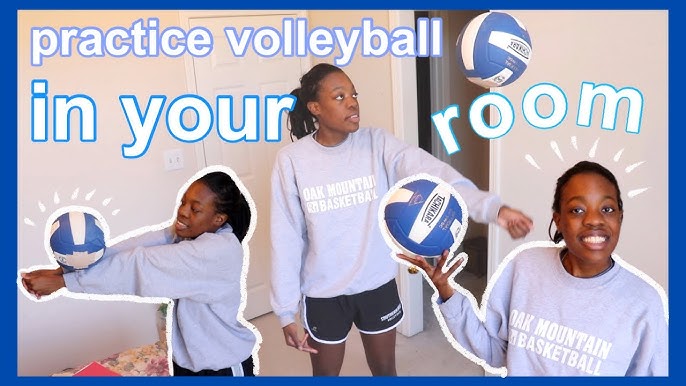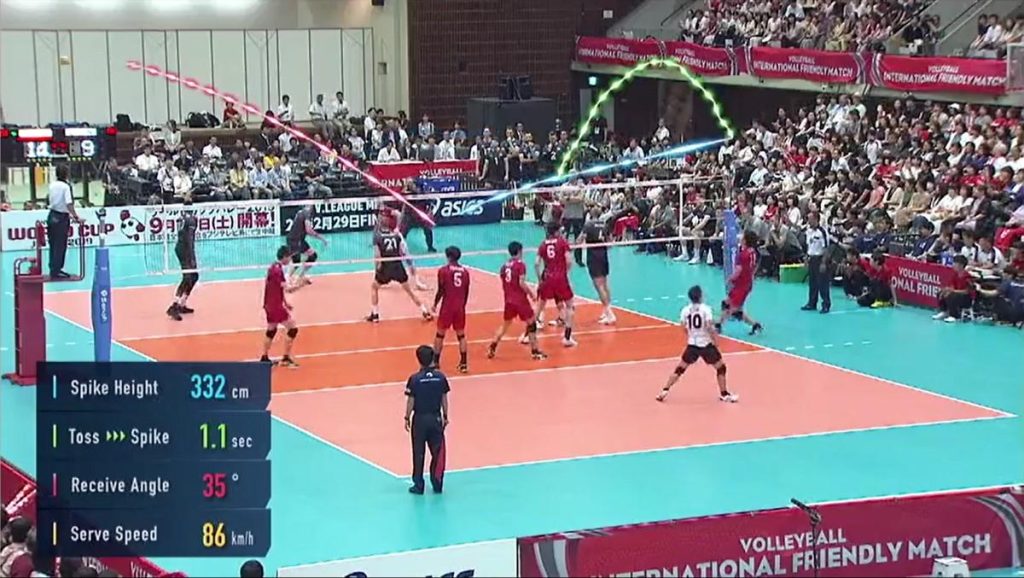Yes, you can practice volleyball without a ball. Surprised?
You don’t need a ball to work on your skills. Practicing volleyball without a ball can seem strange, but it’s effective. This method helps improve your form, strength, and agility. Sometimes, circumstances don’t allow access to a ball. Or you want to focus on specific aspects of the game.
Whatever the reason, you can still enhance your volleyball skills. This post will show you how to practice volleyball without a ball. You’ll learn exercises and techniques to keep your skills sharp. Ready to get started? Let’s dive in!

Credit: www.tiktok.com
Warm-up Exercises
Warming up is crucial before any volleyball practice, even without a ball. It prepares your body for physical activity and reduces the risk of injuries. Below are some effective warm-up exercises you can do to get your body ready.
Dynamic Stretching
Dynamic stretching helps increase your range of motion. It also improves your flexibility and prepares your muscles for movement. Start with leg swings. Stand on one leg and swing the other leg forward and backward. Do this for 10 swings on each leg. Next, try arm circles. Extend your arms to the sides and make small circles. Gradually increase the size of the circles. Do this for 30 seconds.
Cardio Workouts
Cardio workouts are essential for warming up. They increase your heart rate and get your blood flowing. Try jumping jacks. Stand with your feet together and your arms by your sides. Jump while spreading your legs and raising your arms. Return to the starting position. Repeat for one minute. Another effective cardio exercise is high knees. Run in place while lifting your knees as high as possible. Do this for one minute.

Credit: www.youtube.com
Footwork Drills
Practicing volleyball without a ball might seem difficult. But focusing on footwork drills can help. These drills improve your movement on the court. Good footwork is essential in volleyball. It helps you reach the ball quickly and efficiently. Below are some effective footwork drills.
Ladder Drills
Ladder drills are excellent for agility and speed. Place a ladder flat on the ground. Start with simple steps in and out of each space. Increase speed as you get comfortable. Try side-to-side steps for added difficulty. You can also do high knees through the ladder. This drill builds quick feet and balance.
Cone Drills
Cone drills are great for quick direction changes. Set up cones in a zigzag pattern. Run through the cones, changing direction at each one. This mimics moving quickly in a game. You can also set up cones in a square. Practice running to each cone and back to the center. This helps with quick starts and stops.
Hand-eye Coordination
Improving your hand-eye coordination is crucial for any volleyball player. You don’t need a ball to enhance this skill. Here are some effective exercises to try at home.
Shadow Setting
Shadow setting helps you perfect your hand movements and position. Follow these steps:
- Stand in a comfortable position.
- Raise your hands above your head as if you are holding a ball.
- Move your hands in the setting motion. Focus on technique.
- Repeat for 10-15 minutes daily.
This exercise builds muscle memory. It also improves your hand positioning and movement.
Mirror Passing
Practicing in front of a mirror helps correct your form. Here’s how:
- Stand in front of a mirror.
- Assume the passing position.
- Mimic passing movements, focusing on your reflection.
- Ensure your elbows are straight and hands are together.
Doing this exercise helps you spot and correct mistakes. It ensures your passing form is perfect.
Strength Training
Strength training is essential for volleyball players. It builds the muscles needed for powerful spikes and quick movements. You don’t need a gym or equipment for effective strength training. You can use your body weight or simple resistance bands.
Bodyweight Exercises
Bodyweight exercises can improve your strength and endurance. They are simple and effective. Start with push-ups. Push-ups work your chest, shoulders, and triceps. Keep your body straight and lower yourself slowly. Another good exercise is squats. Squats strengthen your legs and core. Stand with your feet shoulder-width apart. Lower your body as if you are sitting in a chair.
Planks are also helpful. They build your core strength. Hold a plank position for as long as you can. Make sure your body is straight. Burpees combine squats, push-ups, and jumps. They are great for overall strength and endurance. Do as many as you can in a minute.
Resistance Bands
Resistance bands are versatile and portable. They can help you build strength without weights. Use a resistance band for shoulder exercises. Stand on the band with your feet shoulder-width apart. Hold the handles and raise your arms to shoulder height. This exercise strengthens your shoulders.
Try using the band for leg exercises. Wrap the band around your legs just above your knees. Perform squats or side-steps. This adds extra resistance and builds your leg muscles. Resistance bands can also help with arm exercises. Step on the band with one foot and hold the handle. Curl your arm up, bending at the elbow. Switch arms after each set.
Agility Drills
Practicing volleyball without a ball might seem odd, but it’s highly effective. Agility drills are a great way to improve your speed, footwork, and reflexes. These drills can help you become quicker on your feet, making you a better player on the court.
Quick Feet Drills
Quick feet are crucial in volleyball. They help you react faster to the ball. Here are some exercises to enhance your foot speed:
- High Knees: Stand in place and run while lifting your knees as high as possible. Perform this for 30 seconds.
- Lateral Shuffles: Stand with your feet shoulder-width apart. Shuffle side to side quickly, keeping your knees bent. Do this for 1 minute.
- Box Drills: Imagine a box on the floor. Step into each corner of the box quickly. Repeat for 1 minute, then reverse the direction.
Directional Changes
Changing directions swiftly is key in volleyball. It helps you cover more ground and reach the ball faster. Try these drills to improve your agility:
- Four-Corner Drill: Place four markers in a square. Run to each marker, touching it with your hand. Change direction quickly. Repeat this for 2 minutes.
- Zig-Zag Drill: Set up cones in a zig-zag pattern. Sprint to each cone, changing direction sharply. Do this for 1 minute.
- T-Drill: Place cones in a T shape. Start at the base, sprint to the top, then move sideways to each end of the T. Finish by running back to the start. Perform this for 1 minute.
Practicing these drills regularly will improve your agility. You’ll become faster, more responsive, and more effective on the court.
Jump Training
Practicing volleyball without a ball might seem unusual, but it can be effective. Jump training is a vital part of volleyball practice. It helps improve your vertical leap and overall agility. This section will guide you through various jump training techniques that can enhance your game without a volleyball.
Plyometric Exercises
Plyometric exercises are great for increasing explosive power. They involve quick, powerful movements that can help you jump higher. Here are some exercises you can try:
- Jump Squats: Start in a squat position. Jump as high as you can. Land back in the squat position.
- Lateral Jumps: Stand with feet together. Jump to the side. Land softly and jump back to the other side.
- Tuck Jumps: Jump up and pull your knees to your chest. Land softly and repeat.
Box Jumps
Box jumps are excellent for building leg strength and power. You can perform these at home with a sturdy box or platform. Follow these steps:
- Stand in front of the box with feet shoulder-width apart.
- Bend your knees and lower into a squat.
- Explode up, jumping onto the box.
- Land softly with both feet on the box.
- Step down and repeat.
Box jumps can be modified for different skill levels. Start with a lower box and gradually increase the height as you improve.
Incorporating these exercises into your routine can significantly enhance your volleyball skills. They help improve your jumping ability, making you more effective at the net.
Mental Preparation
Mental preparation plays a crucial role in enhancing volleyball skills. Without a ball, you can still improve your game through mental exercises. This section explores some effective methods to prepare mentally.
Visualization Techniques
Visualization is a powerful tool for athletes. Close your eyes and imagine yourself playing volleyball. Picture the court, your movements, and the ball’s trajectory. Visualize performing perfect serves, spikes, and blocks. This mental practice can help improve your focus and muscle memory.
Focus Exercises
Focus exercises can sharpen your concentration. Try deep breathing exercises to clear your mind. Sit in a quiet place and take slow, deep breaths. Focus on each breath, clearing any distracting thoughts. Another method is mindfulness meditation. Sit comfortably and pay attention to your surroundings. Notice the sounds, smells, and sensations around you. These practices can enhance your mental clarity and concentration during a game.

Credit: www.amazon.com
Flexibility Work
Flexibility work is crucial for volleyball players. It helps prevent injuries and improves performance. You can practice volleyball without a ball by focusing on flexibility. Below, we explore two effective methods: static stretching and yoga poses.
Static Stretching
Static stretching involves holding a stretch for 15-60 seconds. It helps lengthen muscles and improve flexibility.
| Stretch | Description | Duration |
|---|---|---|
| Hamstring Stretch | Sit down, reach for your toes. Keep legs straight. | 30 seconds |
| Quad Stretch | Stand, pull one ankle to your glutes. Keep knees together. | 30 seconds each leg |
| Shoulder Stretch | Cross one arm over your chest. Hold with the opposite arm. | 30 seconds each arm |
Yoga Poses
Yoga poses enhance flexibility and balance. They also help with mental focus.
- Downward Dog: Start on all fours. Lift hips up and back. Form an inverted V.
- Cat-Cow Pose: On all fours, arch your back then dip it. Repeat slowly.
- Child’s Pose: Sit back on your heels. Stretch arms forward on the floor.
Incorporate these stretches and poses into your routine. Your flexibility will improve, and so will your volleyball skills.
Frequently Asked Questions
How Can I Practice Volleyball Without A Ball?
You can practice volleyball by focusing on fitness, agility, and technique. Exercises like shadow setting, wall exercises, and visualization can improve your skills.
What Exercises Help Improve Volleyball Skills?
Exercises like squats, lunges, and plyometric drills enhance strength and agility. Shadow setting and passing drills without a ball can improve technique.
Can Visualization Improve Volleyball Performance?
Yes, visualization helps in mental preparation and muscle memory. Imagine the game scenarios and your movements to enhance your performance.
How Can I Improve My Volleyball Footwork?
Practicing agility drills, like ladder exercises and cone drills, improves footwork. Focus on quick movements and precise steps.
Conclusion
Practicing volleyball without a ball is possible and beneficial. Focus on improving your footwork, agility, and reflexes. Use wall exercises to simulate hitting and setting. Visualize game scenarios to enhance your mental game. Keep your body conditioned with regular workouts.
Consistency is key. Practicing these skills will prepare you for real play. Stay dedicated, and you’ll see improvement. You don’t need a ball to become a better player. Just determination and creativity. Keep practicing and stay motivated.


